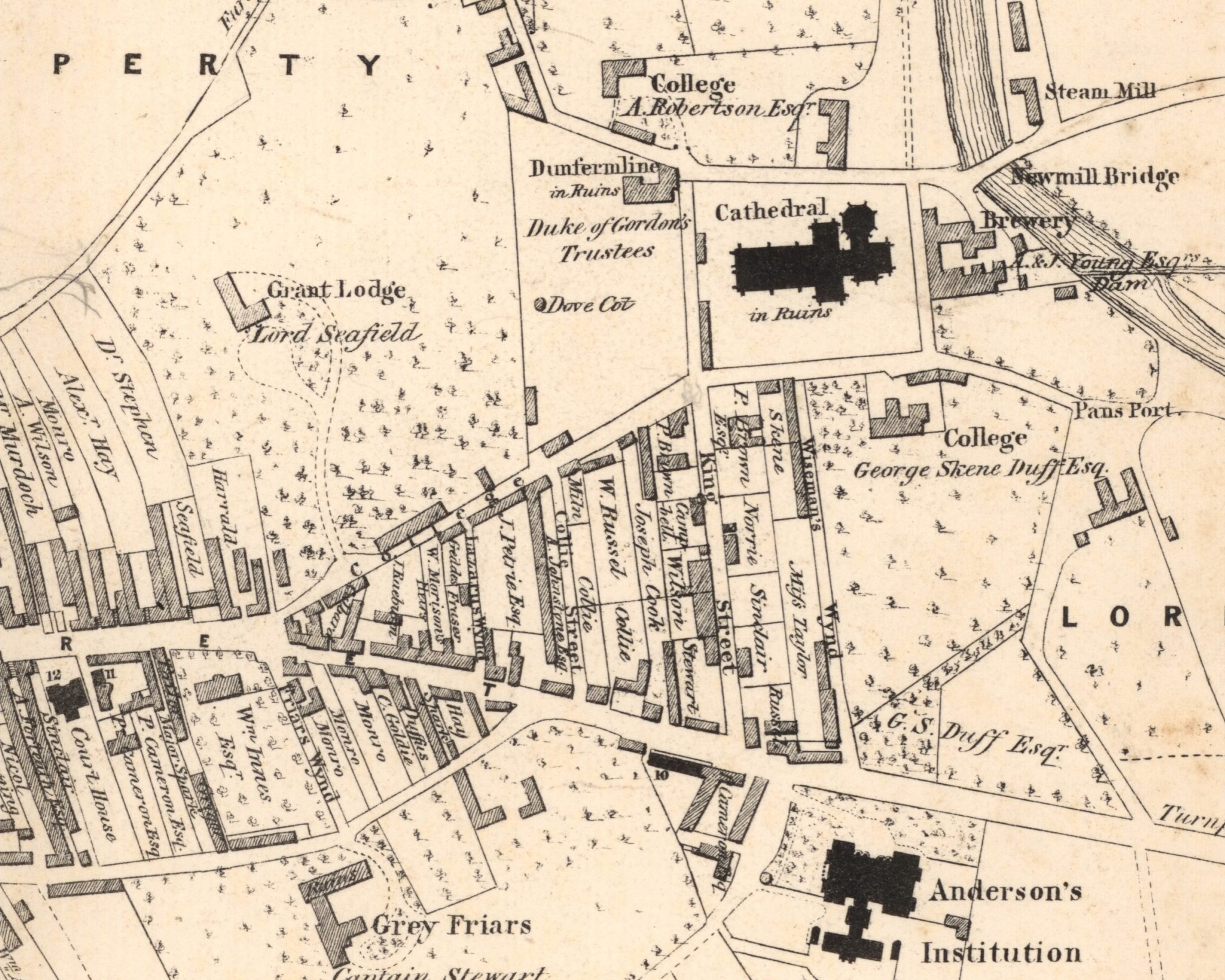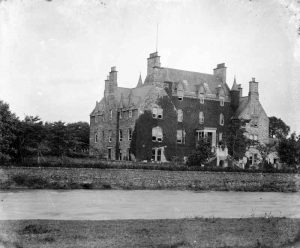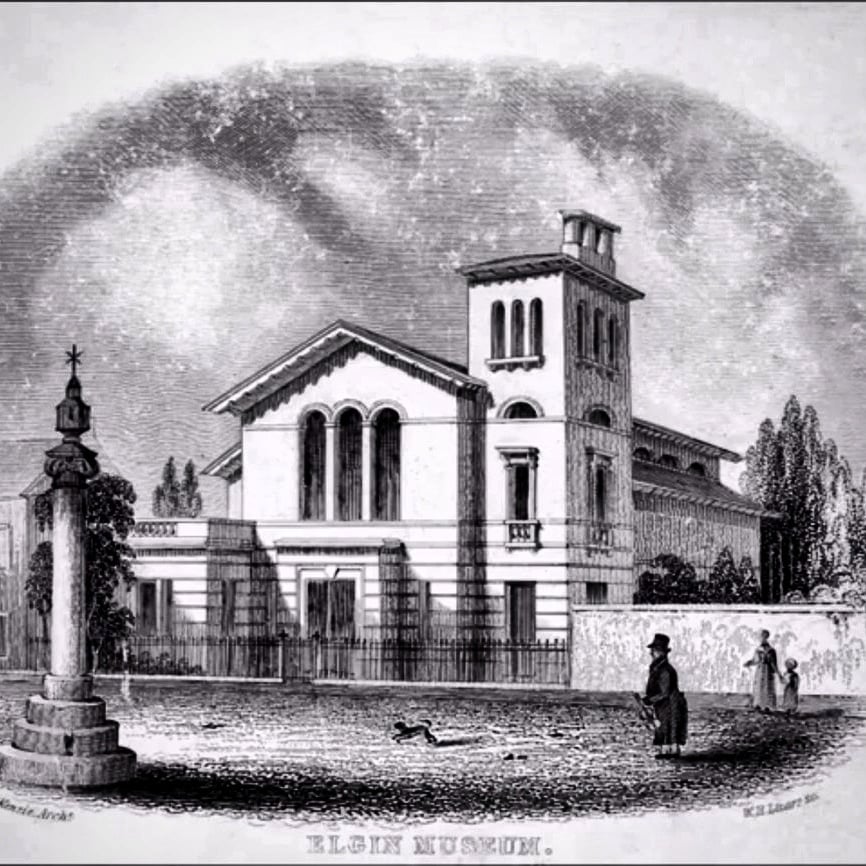With industrialisation, the growth of a decent railway network and busy sea trading with Europe and the rest of the country, Moray experienced a boom period during the 19th Century with a strong focus on urban development. The medieval settlement of Elgin was fast becoming a much bigger conurbation, spreading over to the once separate settlements of Bishopmill in the north and New Elgin in the south. Grand houses were built in broad new avenues leading away from the main town centre, which was now taken over by several main banks of the day, insurance companies, shops and hotels. Those who just got by making a meagre living were still confined to the unsanitary surroundings of the back closes, where large families packed into tiny homes with very little light.
At the other end of the social scale, Elgin could boast a fine new hospital and learning institution, built on legacies left by successful benefactors of Moray. But many felt there was something still missing in the town. A map by Robert Ray of the Burgh of Elgin dated 1838 clearly illustrates properties in Elgin, many giving the names of the property owners. Mr ‘Harrald’ is noted as the occupier of a building at the east end of the High Street from where the family ran a bakery. It’s interesting to note that the entrance gate to Grant Lodge was also close by so I imagine it had a long sweeping avenue in the day. In 1836, the rather formal sounding ‘Elgin and Morayshire Literary and Scientific Association’ paid the princely sum of £60 for a piece of ground in that area – about £6,500 in today’s money – with the distinct aim of building a museum like no other. I doubt if the Harrald family could have imagined the splendid building that would soon appear next door!
The architect, Thomas MacKenzie, left detailed notes on the planning process. These explain at length why the neoclassical style of many of the grand buildings of that time was passed over in preference for an Italian style model, which he felt offered the best interior design possible for displaying the many artefacts in the Association’s collections.
This Category A listed building was completed in 1842. Donations of valuable historical material came flooding in, ranging from local fossils and other archaeological treasures, literature and a myriad of weird and wonderful items brought back from those either working abroad or just experiencing the Grand Tour. By 1896, it had become necessary to purchase more ground to build an extension for this ever-growing collection. An additional plot was secured from the Harrold family.
The foregoing research has been of great personal interest as the ‘Harrald’ connection of bakers and weavers is part of the family tree of a Gairland team member – with many Harrold family members still living in and around Elgin today.
The building continues to be owned and run by the Moray Society as Scotland’s oldest independent museum. We have been privileged to gain access to many of the museum’s photographic and literary treasures. It’s thanks to the dedicated volunteers there that Moray continues to enjoy these amazing collections. Preserving the past will ensure we never forget the rich history of this area and how we all evolved. Why not go along and immerse yourself in this very special jewel in Moray’s crown. https://www.elginmuseum.org.uk


